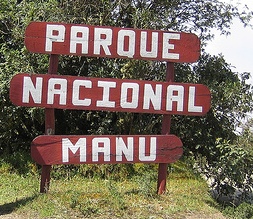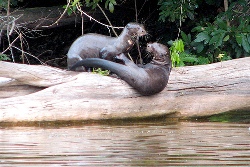 Manu National Park (Parque Nacional Manu) is the largest national park in Peru, covering an area of 15,328 sq km/ 5,918 sq miles. It has been designated as a UNESCO World Heritage Site and even today it’s fairly inaccessible by road.
Manu National Park (Parque Nacional Manu) is the largest national park in Peru, covering an area of 15,328 sq km/ 5,918 sq miles. It has been designated as a UNESCO World Heritage Site and even today it’s fairly inaccessible by road.
Location
Manu National Park is located in Madre de Dios and Paucartambo, Cusco. The park includes the entire basin of the Manu River, from the Andes up to the Amazon plains.
There are two mains routes to the park:
- a gravel road from Cusco to Salvacion followed by a travel along the river;
- by air from Cusco and then travel along the river.
Flora and fauna
The biosphere reserve protects several ecological zones. The park has one of the highest levels of biodiversity in the world. More than 15,000 species of plants and 250 species of trees can be found on a single hectare. The reserve is also home to over 800 species of birds, making it one of the best places to go bird watching. There are also 13 species of primates, five felines and unknown amounts of fish, reptiles and insects.
Within the park there are some endangered species such as the Andean bear, the taruca, the black lizard and the sea lion.
Climate
The park’s climate varies from the dry and cold Andes to the hot and humid Amazon forests. The wet season lasts between October and April, while from May to September there is less rain. The temperature doesn’t vary much during the year, with the coldest month being June (average temperature 11.1C/52 F). The hottest month is October when temperatures average 25.4C/78 F. Fog is common all year round in the mountains.
Visiting the park
 In order to visit the park you need to make reservation via travel agencies. It’s not hard to find agencies offering such tours and prices vary according to the duration of the tour and the accommodation included in the price. A 4 nights tour costs up to US$1390 for two persons and includes accommodation, meals and activities.
In order to visit the park you need to make reservation via travel agencies. It’s not hard to find agencies offering such tours and prices vary according to the duration of the tour and the accommodation included in the price. A 4 nights tour costs up to US$1390 for two persons and includes accommodation, meals and activities.
Trekking, wild life observation and mountaineering are allowed in the park but generally as part of an organized group. There are lodges within the park and are operated by 6 tourism companies.